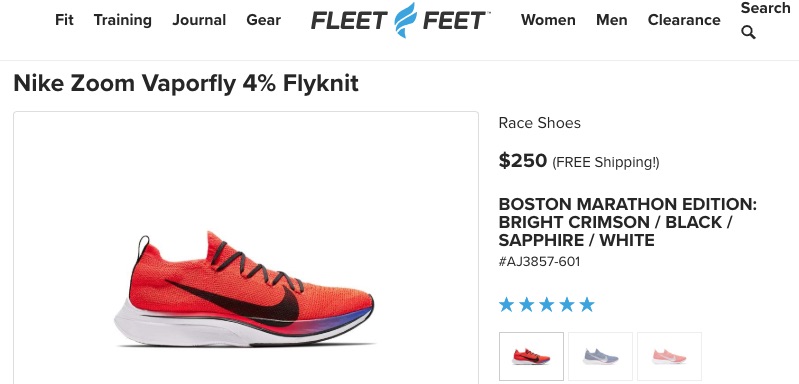
Unique product descriptions avoid duplicate content and thus help brands and retailers rank on search results. Retailer Fleet Feet created its own description of Nike’s Zoom Vaporfly 4% Flyknit running shoe, enabling it to rank on page one.
Why does the ecommerce community have such a blind spot when it comes to unique product descriptions?
Search engine optimizers understand the harm of duplicate content. The same content on multiple pages of a site creates competition between those pages and reduces the likelihood that any of them will rank in search results.
Syndicated product descriptions produce duplicate content, too. The only difference is that it’s duplicating that content on other sites, giving all of them the same on-page relevance.
Why is duplicate product copy accepted so blindly? The answer depends on whether you’re the syndicator or the site using the syndicated content.
Brands, Manufacturers
Huge brands and manufacturers such as Nike have little to lose by letting resellers use their product content. The sites of those huge companies are virtually unassailable based on link authority, contextual relevance for their products, and search engines’ preference for ranking well-known brands.
Thus if you’re Nike or a similar megabrand, what if thousands of small — and not so small — retailers use your syndicated product content? The likelihood that any of them will outrank you for your own branded products is extremely small.
But how many companies sell $1 billion worth of their products online per quarter, such as Nike?
Even prominent brands are facing pressure in search engine results from their retail frenemies. The brands have to support the retailers’ ability to sell their products. After all, the retail channel is typically a larger source of revenue than the brands’ direct-to-consumer efforts. And brands need those retailers to represent products accurately, to entice buyers. And a good way to do that is to feed product copy that the retailers can use verbatim on their sites.
But brands want to sell online, too. SEO is an important source of traffic. And having a strong, defensible SEO strategy requires unique, relevant content.
So how do brands have their cake (product information for retailers) and eat it (unique info for their own sites), too? They feed one set of product descriptions to their retail channel and write deluxe, ultra-detailed descriptions for their own site.
Before dismissing this as unworkable or too expensive, brands should experiment with high-margin or high-demand products. Start with one product, or 10, or all of the products in a single line. Perhaps use the products that need the most ranking help. Write unique, bulleted, high-value descriptions for each item.
Then let the test run for, say, three months after Google indexes the new descriptions. If Google doesn’t regularly crawl your products, go into Search Console’s URL Inspection Tool to request indexing for the pages you’ve optimized.
Brands occasionally have platform restrictions that make it difficult to deliver one set of product copy to retailers and another for their own sites. Brands sometimes use the same product management application for both.
If that’s the case, ask your developer team for a workaround. Perhaps they can temporarily hard-code product copy into the test pages. Perhaps they could devise a more elegant solution.
Retailers
Using syndicated content is a problem for retailers, as well. Good content is expensive, especially for a large product catalog. Accidentally misrepresenting product details can be costly in terms of returns and customer service queries. And product turnover from multiple brands can create a never-ending cycle of content creation.
How can retailers afford to write unique content for all of those products?
How can they not afford it?
Consider sporting goods retailers battling for search rankings for the $250 Nike Vaporfly 4% Flyknit, a flagship running shoe. Nike provides a product description that includes two sentences of romance copy, five bullets of benefits, and six bullets of product details — all of which Nike offers to all online retailers.
Many retailers use it. But not the ones that rank on page one in Google.
None of the page-one retailers — Fleet Feet, JackRabbit, Dick’s Sporting Goods, Eastbay — use Nike’s romance copy or descriptive bullets. Each starts with Nike’s version and then adds a unique voice and style.
For example, Fleet Feet expands on Nike’s reference to marathons by first referring to the winning marathoners who wore the shoe. Then Fleet Feet dives into the shoe’s details. JackRabbit explains the benefits of the shoe’s technology in plain English. Dick’s Sporting Goods breaks the shoe’s overall description into bulleted groups consistent with its other products. And Eastbay provides a longer description with more contextual relevance.
In other words, each of them has an angle. They don’t merely reorder the words, which search engines have long caught up with.
Turn your content optimization tools and skills toward your product pages. Try a three-month test and measure the results.